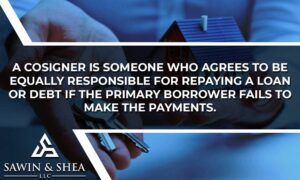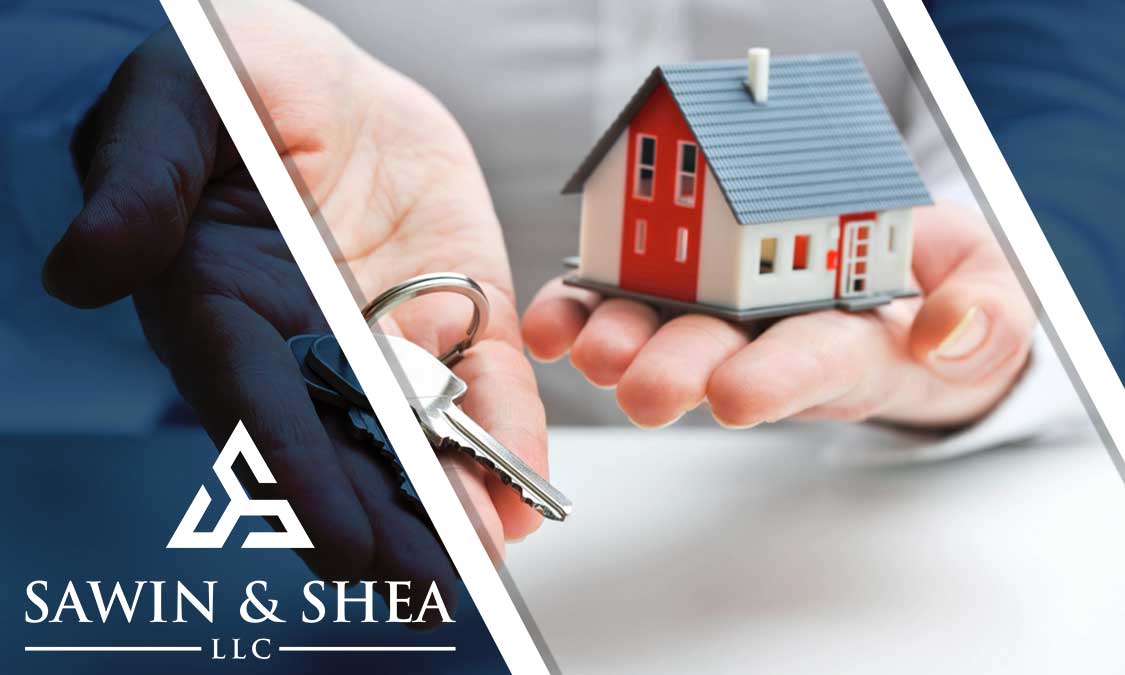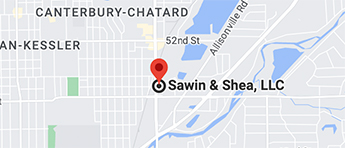For many Americans, owning a home is a major part of the American Dream. However, dealing with financial hardships like bankruptcy can make that dream seem out of reach. But, Can You Buy a House After Chapter 7 with a Co-Signer?
If you’ve gone through a Chapter 7 bankruptcy, you may be wondering if homeownership is still possible for you, especially if your credit has taken a major hit.
The good news is that you can eventually buy a house after bankruptcy, and having a cosigner can even help improve your chances.
Understanding the Home Buying Journey with Co-Signers and Bankruptcy

Before we dive into the specifics of buying a house after Chapter 7 with a cosigner, it’s essential to understand what a cosigner is and how bankruptcy affects them.
A cosigner is someone who agrees to be equally responsible for repaying a loan or debt if the primary borrower fails to make the payments.
In the case of mortgage loans, a cosigner essentially guarantees that the lender will receive the monthly payments, even if the primary borrower defaults.
When you file bankruptcy with Chapter 7, your qualifying debts are discharged, meaning you’re no longer legally obligated to pay them. However, this discharge only applies to you, the primary borrower – it doesn’t absolve co-signers from their responsibility to repay the debt.
This means that if you have a cosigner on a loan before you filed bankruptcy, they may be on the hook for the remaining balance after your bankruptcy process is finalized.
The lender can pursue legal action against your cosigner to collect the debt, and late or missed monthly payment can negatively impact their credit score and credit history.
Can a Co-Signer Help You Buy a House After Bankruptcy?
While having a cosigner doesn’t automatically guarantee that you’ll be approved for a mortgage loan after bankruptcy, it can certainly improve your chances. Lenders typically view a mortgage application with a cosigner more favorably because there’s an additional party responsible for making the loan payments.
However, it’s important to note that even with a cosigner, you’ll still need to meet the minimum credit score, waiting period, and other requirements set by the mortgage lenders and the specific loan type you’re applying for.
Additionally, lenders will likely consider the lower credit score between you and your cosigner when evaluating your mortgage application for an FHA loan or a conventional loan for a house after bankruptcy.
Remember that in most cases, you’ll need to wait 2-4 years after your Chapter 7 bankruptcy discharge or dismissal date before lenders will consider your home loan application.
Loan Types
Here’s a breakdown of the different loan types and each respective waiting period after a Chapter 7 bankruptcy discharge:
FHA (Federal Housing Administration) Loans: Lower than most conventional loans, a 2-year waiting period and a base credit score of 580 (or 10% down payment if your score is between 500-579) are expected with an FHA loan for a house after bankruptcy
VA Loans: Similar to an FHA loan, a 2-year waiting period and a base credit score typically around 620, also seen with a conventional loan, are common for VA loans
USDA Loans: With USDA loans, the regulations are more strict than with an FHA loan or a VA loan. Expect a 3-year waiting period and a required base credit score of 640
Conventional Loans: For a conventional mortgage, you’ll see 4-year waiting periods, longer than the FHA loan, USDA loan, or VA loan, and a base credit score of 620
It’s worth noting that these waiting periods are the minimum requirements set by the respective agencies.
Some mortgage lenders may have stricter guidelines and require longer waiting periods, even with a cosigner for each home loan type.
During this waiting period time frame, focus on rebuilding your credit through smart financial habits and reach out to lenders and real estate professionals when you’re ready to get pre-approved for a home loan.
Additionally, if your bankruptcy was caused by extenuating circumstances beyond your control (such as a job loss, medical bills, divorce, or other financial situation), you may be able to qualify for a mortgage sooner than the typical waiting periods to buy a house.
Down Payment and Mortgage Insurance Requirements
Another factor to consider when buying a house after Chapter 7 bankruptcy is having enough saved for a down payment and qualifying for acceptable terms.
In addition to the waiting period, different loan types have different down payment and mortgage insurance requirements:

FHA Loans: Usually require a minimum 3.5% down payment. You’ll also need to pay annual insurance premiums for the life of FHA loans unless you eventually refinance to a conventional loan.
VA Loans: No down payment is required if you have full VA loan entitlement. The VA also does not require any upfront or annual insurance.
USDA Loans: USDA loans require no initial payment, but the home must be in an eligible rural area as defined by the United States Department of Agriculture. Annual insurance fees apply for the life of the USDA loan.
Conventional Loans: Most lenders will want you to put at least 20% down to avoid paying private mortgage insurance (PMI). But some allow Fannie Mae or Freddie Mac conventional loans with just 3% down if you have good credit when you apply for a mortgage.
Risks and Considerations for Co-Signers
While having a cosigner can undoubtedly improve your chances of getting approved for a mortgage after bankruptcy, it’s crucial to understand the risks involved for the cosigner.
As mentioned earlier, when you file for Chapter 7, your cosigner remains legally responsible for repaying the debt.
If you default on the mortgage, your co-signer’s credit score and financial situation could be severely impacted. The lender may even pursue legal action against them to recover the outstanding balance.
It’s essential to have an open and honest conversation with your potential cosigner, ensuring they fully understand the risks they’re taking. They should be prepared to make the mortgage payments in full if you’re unable to do so for any reason.
Additionally, it’s important to differentiate between a co-signer and a co-borrower. A co-borrower is equally responsible for the mortgage loan from the outset, whereas a cosigner is only liable if the primary borrower defaults.
Rebuilding Your Credit After Bankruptcy
Regardless of whether you have a cosigner or not, rebuilding your credit after bankruptcy is crucial if you want to improve your chances of getting approved for a mortgage loan.
Here are some tips to help you rebuild your credit after a Chapter 7 bankruptcy:
1. Obtain a free credit report from the three major credit bureaus (Experian, Equifax, and TransUnion) and dispute any errors or inaccuracies.
2. Make all future loan and bill payments on time, as payment history is a significant factor in your credit report and on your credit score. Lenders want to see a solid history of making on-time payments for all your bills and responsibly managing your financial obligations before approving you for a mortgage after bankruptcy.
3. Consider getting a secured credit card or credit-builder loan to establish a new, positive credit history while making on-time payments. With a secured credit card, you put down a refundable security deposit that becomes your spending limit. Then make a small charge each month and pay it off in full. This helps create a positive payment history on your credit report.
4. Keep your credit utilization low by paying down high-interest debt like credit cards, car loans, and personal loans when working toward owning a house after bankruptcy.
5. Avoid taking on new debt, unsecured debts, or a car loan until your credit score improves.
6. Credit-builder loans are another option to build credit by making scheduled payments to yourself that are reported to the credit bureaus. Be wary of unsecured credit cards and other new debt until your credit score fully recovers.
By following these steps and being patient before you apply for a mortgage, you can gradually rebuild your credit and increase your chances of getting approved for a mortgage loan after bankruptcy, with or without a cosigner.
Writing a Letter of Explanation
In addition to rebuilding your credit, mortgage lenders will often require you to write a letter of explanation detailing the extenuating circumstances that led to your bankruptcy filing.
This letter is an opportunity for you to provide context and demonstrate that you’ve taken steps to address the underlying issues that caused your financial difficulties.
In your letter, be sure to explain the extenuating circumstances that led to your bankruptcy (if applicable), such as job loss, medical bills, or divorce.
Describe the steps you’ve taken to improve your financial situation, such as developing a budget, paying down debts, and establishing new, responsible credit habits.
A well-written letter of explanation can go a long way in convincing mortgage lenders that you’re a responsible borrower who has learned from past mistakes and is committed to making on-time mortgage payments beyond the extenuating circumstances that prohibited you before.
Working with Real Estate Agents and Getting Pre-Approved
Once your waiting period after bankruptcy is over and you’ve made significant progress rebuilding your credit score, it’s time to start seriously pursuing home loans again. A crucial early step is getting pre-approved for a mortgage.
A pre-approval letter from a lender shows real estate agents and home sellers that you are a qualified, motivated buyer. It gives you a clear price range to shop in based on your income, debts, and credit profile.
The pre-approval process also allows the lender to check that you meet the requirements for home loans like Fannie Mae or Freddie Mac conventional loans.
When applying for pre-approval, be prepared to provide documentation like W2s, pay stubs, tax returns, and bank statements. The lender will want to see that you have been making on-time payments on all bills and obligations post-bankruptcy. They’ll also need to verify that your Chapter 7 case was discharged by the court.
Know Your Options: Buying a House After Chapter 7 with a Co-Signer
While filing for Chapter 7 can undoubtedly make the home-buying process more challenging, it’s not an insurmountable obstacle.
By understanding the waiting periods for different loan types, rebuilding your credit, and considering the option of having a cosigner, you can increase your chances of getting approved for a mortgage loan after bankruptcy.
Remember, having a cosigner when you apply for a mortgage is not a guarantee of approval, and it comes with significant risks for the cosigner.
Be sure to have open and honest conversations about these risks and carefully consider whether a cosigner is the right choice for your situation.
If you’re navigating the complexities of bankruptcy and homeownership, it’s always advisable to consult with an experienced bankruptcy attorney who can guide you through the legal process and loan terms and help you make informed decisions regarding a home loan.
With patience, diligence, and the right support, you can overcome the challenges of bankruptcy and achieve your dream of homeownership.
Contact Sawin & Shea, LLC for Chapter 7 Bankruptcy Guidance
If you have any other questions about buying a house after multiple bankruptcies, dealing with remaining debt from a previous bankruptcy, bankruptcy court, or ensuring you meet all requirements, it’s wise to consult an experienced bankruptcy lawyer.
They can review your full financial situation and explain all available loan options and waiting period terms as you pursue homeownership after bankruptcy.
If you’re considering filing Chapter 7 bankruptcy or are going through the process, it’s important to remember that you don’t have to go through the steps alone. Bankruptcy is the best financial option for many struggling with debt, and it may be the right tool to get your finances back on track, rebuild credit, and on the road to homeownership.
For bankruptcy assistance in Indiana, contact the experienced bankruptcy attorneys at Sawin & Shea, LLC. You can schedule a free case consultation today online or by calling 317-759-1483.



